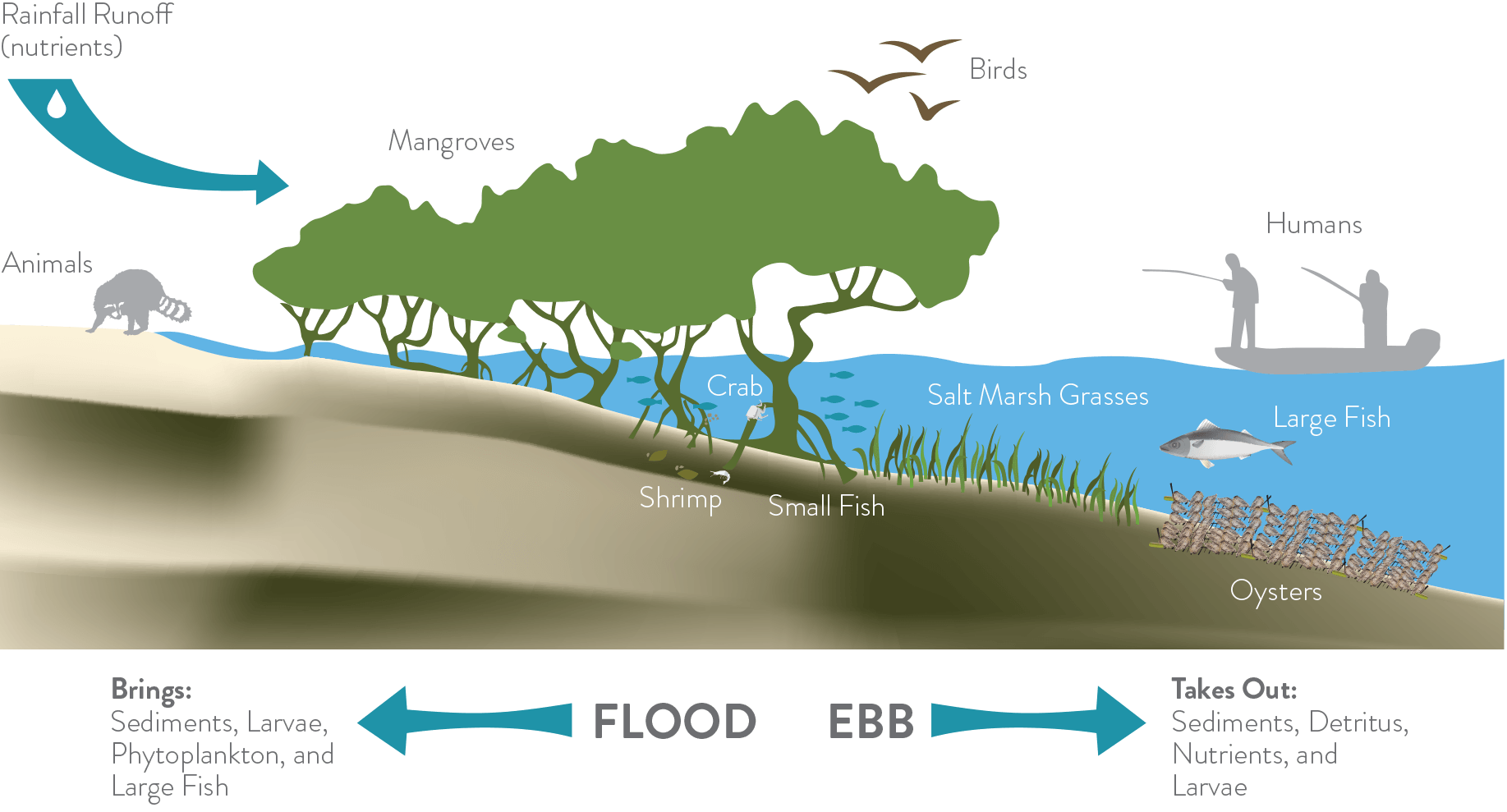
Living Shorelines Combat Environmental Threats
For decades, the Indian River Lagoon (IRL) has been severely threatened by rapid development, habitat destruction, over-harvesting and pollution. The northern half of the Lagoon has only a few outlets to the sea, so it does not flush very rapidly which means that stormwater runoff, wastewater treatment discharges, septic systems and excess fertilizer applications have flooded the IRL with harmful nutrients and sediments.
The nutrients feed massive algal blooms, and together with the suspended particles, block the sun from reaching the seagrass. As a result, the seagrass dies, oxygen levels fall and fish suffocate. The rotting fish produce more available nutrients which leads to more blooms.
Living shorelines provide a multitude of benefits to reduce the effects of these threats.
What Is A Living Shoreline

A living shoreline is a nature-based approach (rather than hardened solutions like seawalls, bulkheads and rock revetments) for shoreline protection and wetland restoration. Living shorelines are built with vegetation, marsh, oyster reefs and other organic features to control erosion, reduce wave energy, improve water quality, filter pollutants, and provide valuable habitats for plants and animals. Components can include aquatic vegetation, oyster reefs, sand and stone.
Benefits of a Living Shoreline
- Filter pollutants to improve water quality
- Store carbon and greenhouse gases
- Accrue sediment
- Absorb wave energy and protect shoreline
- Reduce erosion challenges
- Attract wildlife and expand/protect marine habitats
- Increase fish and marine life populations
- Maintain property value using a cost-effective, long term solution to structural upkeep
- Adapt to climate change and varying sea levels
We're Here to Help
Restore Our Shores needs your donations and/or volunteer time to reverse environmental damage. Take a look through our project sections to see the ways our volunteers are already helping. If you’re interested in learning more about Living Shorelines, sign up for our updates.

